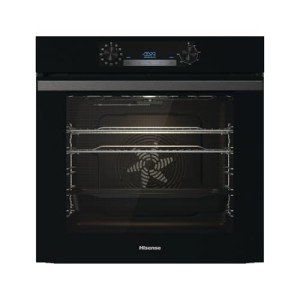The Rise of Built-In Ovens: A Seamless Approach to Modern Cooking
In contemporary kitchens, where style visual appeals blend effortlessly with functionality, one appliance stands out as a true game changer: the built-in oven. As house owners and chefs alike continue to look for innovative services that enhance their cooking experience, built-in ovens have actually ended up being increasingly popular. This article checks out the benefits, factors to consider, and patterns surrounding built-in ovens, highlighting why they are a vital function in modern cooking areas.
What is a Built-In Oven?
A built-in oven is a kitchen area device designed to be integrated into the cabinets of a kitchen area instead of standing alone. Unlike conventional freestanding ovens, which can be moved and placed anywhere, built-in ovens can be found in numerous styles and sizes to fit particularly within designated spaces. Offered in single or double configurations, these ovens offer a structured appearance that complements contemporary cooking area designs.
Advantages of Built-In Ovens
1. Space-Saving Design
Among the most enticing benefits of built-in ovens is their space-saving design. By integrating the oven into kitchen cabinetry, you can free up important counter and flooring space. This is particularly helpful in smaller cooking areas, where maximizing space is necessary. ovensandhobs -in ovens can be installed at eye level, making them more available and lowering the need to bend down.
2. Visual Appeal
Built-in ovens contribute to a sleek and cohesive kitchen area design. Readily available in different finishes-- such as stainless steel, black, white, and customized cabinetry-- they can blend flawlessly into the overall design. This aesthetic appeal enhances the kitchen's visual consistency and elevates the space, developing a modern and advanced environment.
3. Boosted Functionality
Lots of built-in ovens come geared up with advanced cooking innovations, such as convection cooking, steam ovens, and clever functions. These improvements enable versatile cooking alternatives, making it much easier to achieve professional-level outcomes in your home. Smart built-in ovens can even link to Wi-Fi, making it possible for users to manage the oven remotely, receive alerts, and access a range of cooking programs and dishes.
4. Enhanced Ventilation
Due to the fact that built-in ovens can be integrated with kitchen hoods and ventilation systems, they can assist keep better air quality and lower cooking smells. This is especially considerable for those who love to prepare with fragrant spices and ingredients, as an effective ventilation system can keep the cooking area comfy and inviting.
5. Customization Options
Built-in ovens provide a wide range of customization choices to match private cooking styles and requirements. From professional-grade appliances with numerous cooking modes to compact styles for smaller sized cooking areas, property owners can choose the oven that fits their specific requirements. Many producers likewise provide personalized front panels, permitting you to match the oven's look to your kitchen cabinetry for a truly combined look.
Considerations When Choosing a Built-In Oven
While built-in ovens have numerous advantages, there are crucial considerations to bear in mind before buying:
1. Price
Built-in ovens typically come with a higher price than their freestanding equivalents due to their design and setup requirements. It's essential to factor in both the expense of the oven and any extra costs related to cabinetry adjustments or installation.
2. Setup Requirements

Installing a built-in oven frequently needs professional help, specifically if you need to customize existing cabinets. Guarantee that you consider any costs associated with setup, consisting of labor and possible cabinets adjustments.
3. Size and Dimensions
Before buying a built-in oven, measure the designated area properly to ensure a proper fit. Built-in ovens come in various sizes and setups, so choosing one that lines up with your needs and kitchen style is important.
4. Lifestyle and Usage
Consider your cooking habits and needs when picking a built-in oven. If you often host large gatherings, a double oven may be more helpful. On the other hand, if you have a compact cooking area, a single-wall oven might suffice.
Patterns in Built-In Ovens
The kitchen area device market is continually progressing, and built-in ovens are not exempt from emerging trends. Some existing trends include:
Smart Technology Integration: With the increase of wise home innovation, built-in ovens now typically include connectivity choices. This enables users to keep track of cooking progress and adjust settings by means of mobile apps.
Energy Efficiency: As sustainability ends up being a priority, many manufacturers are purchasing energy-efficient built-in ovens that reduce energy intake while preserving performance.
Multi-functional Designs: Built-in ovens now offer features such as air frying, slow cooking, and steaming, offering flexibility that meets a large range of cooking techniques.
Conclusion
Built-in ovens unquestionably represent a best blend of design, function, and benefit in today's kitchens. As more property owners go with this modern service, the focus shifts to producing a cooking space that is as aesthetically pleasing as it is useful. Whether you are constructing a new home or renovating your kitchen area, thinking about a built-in oven might elevate your culinary experience and transform your kitchen into a trendy and practical haven. With a selection of options available and continuous developments in technology, built-in ovens remain a standout option for both newbie cooks and cooking enthusiasts alike.
